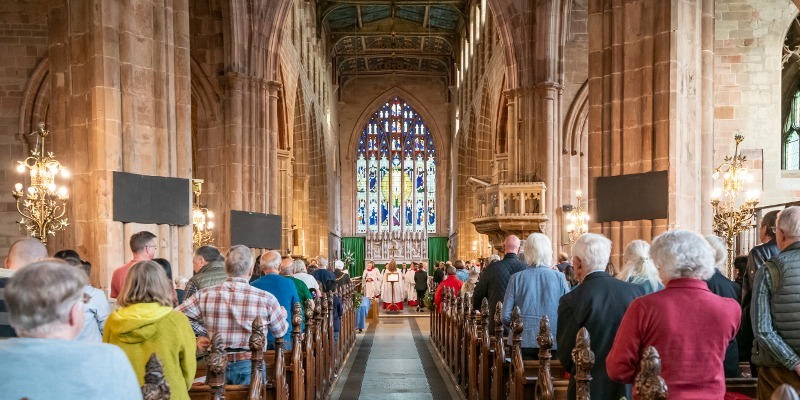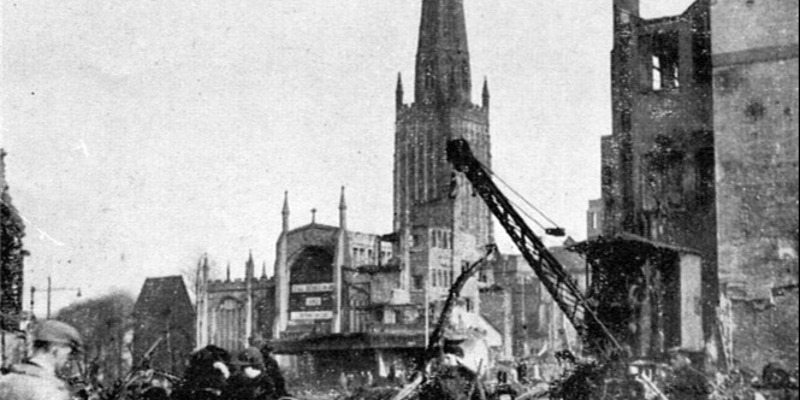Our Heritage

Holy Trinity's story is a long one!
The first known reference to Holy Trinity Church is in 1113. Its beginnings are tied in to the history of the Benedictine Priory of St Mary which was associated with Earl Leofric and Lady Godiva. The church appears to have originally been established next door to the Priory to act as a “side chapel” to the priory church and for the use of the priory’s tenants.
The original Norman church was all but destroyed in a fire in 1257. The North porch was the only part of the original building to survive and is still in use today. The rest of the church was entirely rebuilt during the 14th Century. The walls were brightly painted, helping those churchgoers who could not read to understand the messages of the bible.
One example of this ancient artwork still remains. During the 1430s, the painting of the Last Judgement was created above the tower arch to demonstrate the eternal consequences of both charitable and uncharitable acts. The painting has twice disappeared from view across the centuries but, after years of painstaking restoration, it was finally revealed in 2004. Find out
more about the painting here.
The church underwent massive upheaval during the Reformation in the reigns of Henry VIII and his son Edward , losing most of its priests and many of its treasures.
The church has been made up of many interesting and passionate people across the years. There have been notable priests, ranging from the first vicar of the church, Ralph de Sowe, through John Bryan, who was deemed too non-conformist to remain in 1662, to the 19th century’s Revd Dr Walter Farquar Hook who, according to one parishioner, “set everything a-going”.

He was responsible for, among other things, the establishment of a savings bank, an infant school, a dispensary and the beginning of evening services at the church.
A celebrated 18th century actress, Sarah Siddons, was married in the church in 1773 and Mary Ann Evans, the 19th century novelist better known by her pen name of George Eliot, attended Holy Trinity for many years.
Along with the whole of Coventry, Holy Trinity and its people experienced great trauma in November 1940, when German air raids laid waste to great areas of the city. The church was saved from destruction by the amazing commitment and bravery of the vicar at the time, the Revd Clitheroe. You can
read more about Holy Trinity’s blitz survival here.
Holy Trinity’s long story continues still, as a lively church, rooted in God’s love and with a passion to serve Coventry. It is a house of prayer for all, inviting everyone who enters to take time to experience the special peace that can be found in this place.
The doom painting of the Last Judgement

During the 1430s, the painting of the Last Judgement, also known as the “Coventry Doom”, was created above the tower arch to demonstrate the eternal consequences of both charitable and uncharitable acts.
The picture may have been created as a result of Coventry having experienced an earthquake around that time, making church leaders think that the Day of Judgement was soon to come.
Find out more about the painting here
Holy Trinity and the Blitz

It was little surprise that Coventry was a target for the Germans during World War II. With a long history of manufacturing, the city was an obvious place for the production of military supplies, and particularly armaments. By the time war was officially declared in 1939, the city and its people were already making a huge contribution to the war effort.
Find out more about Holy Trinity and the Blitz
Historic features of the Church
Click on the images below to know more.